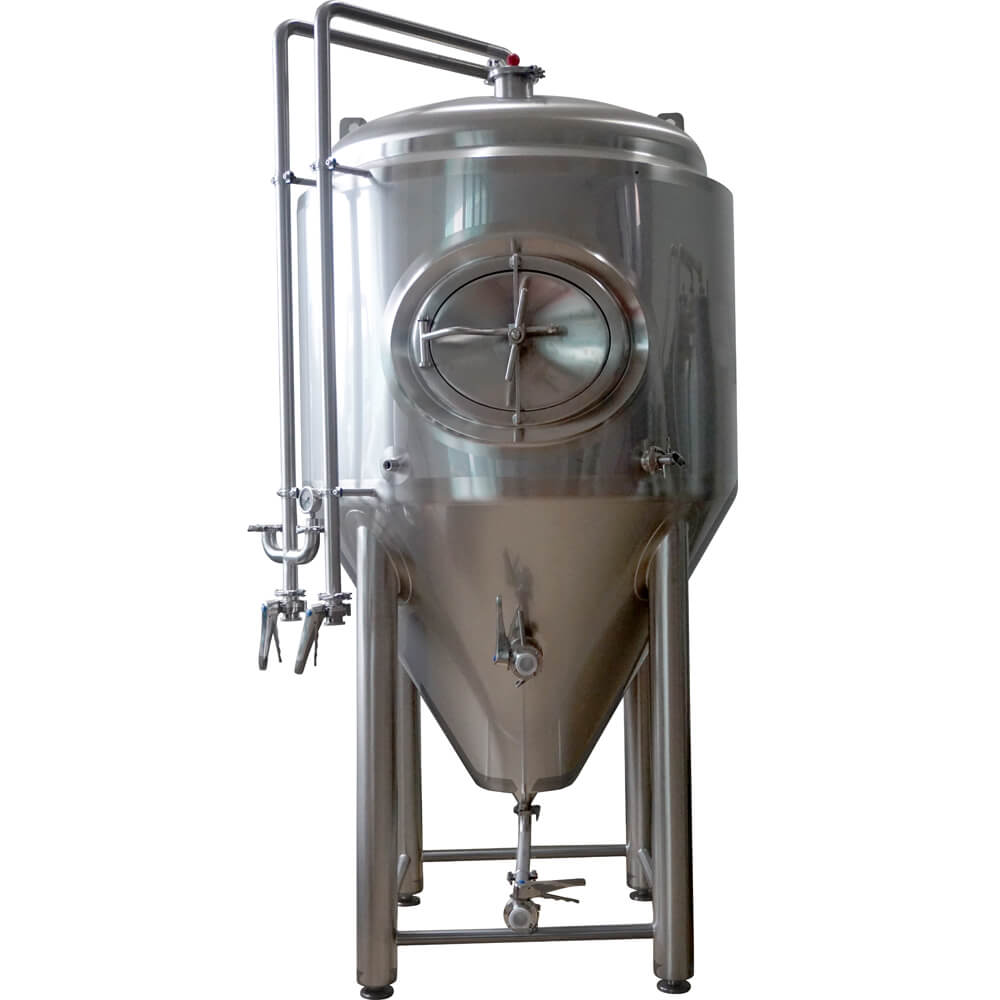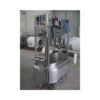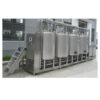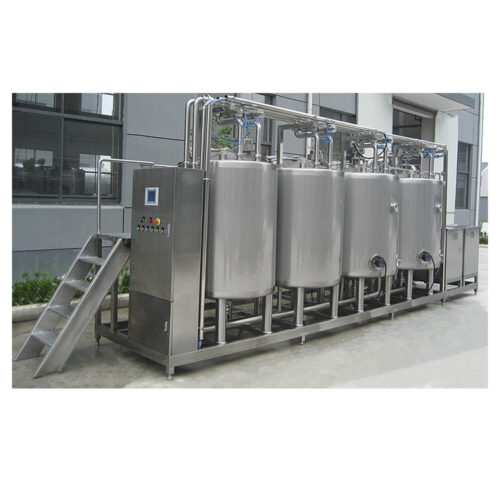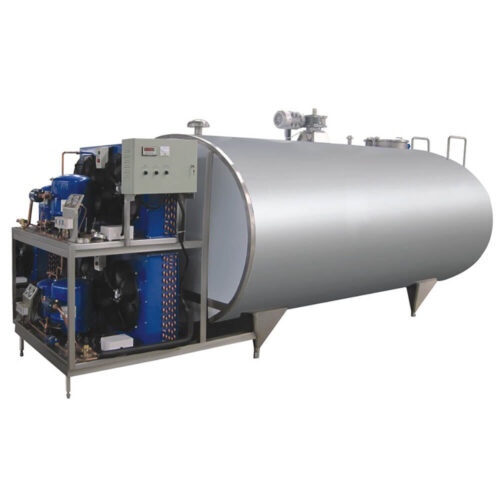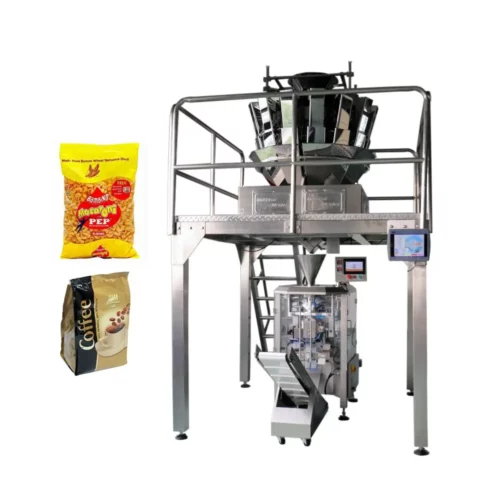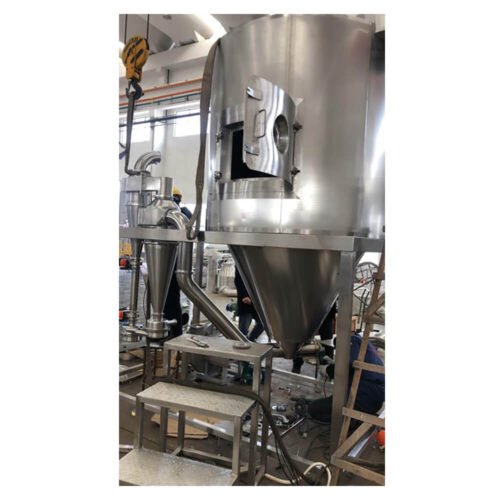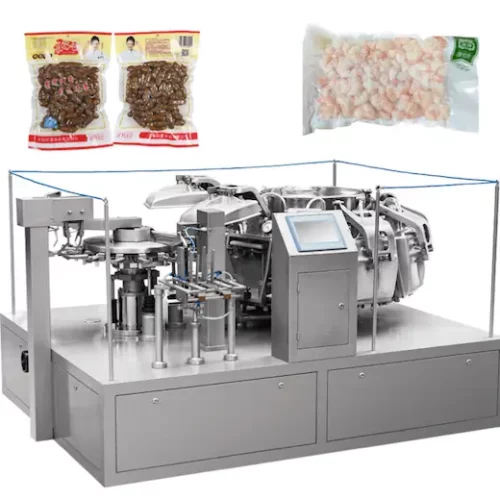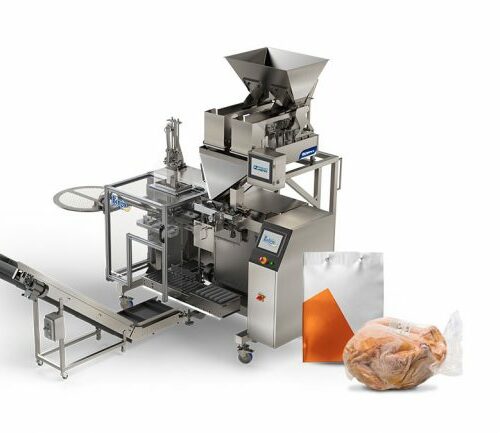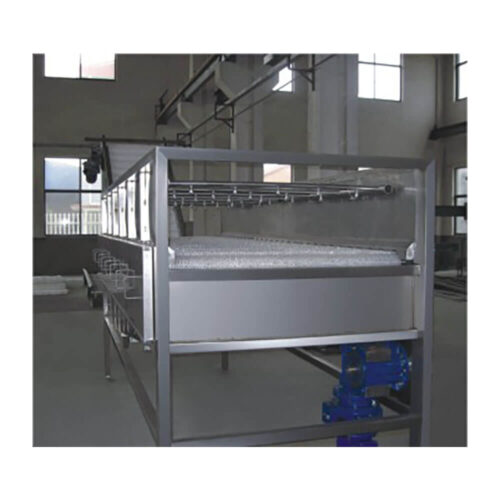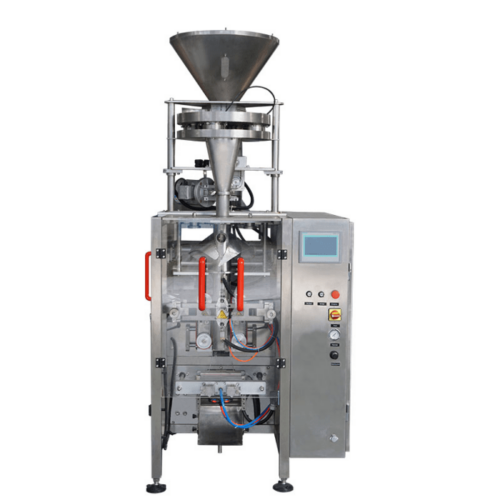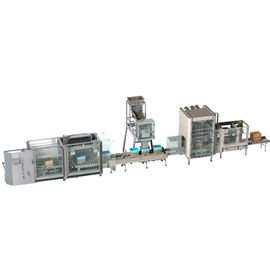Beer, one of the world’s oldest and most widely consumed alcoholic beverages, owes its unique taste and character to the intricate process of fermentation. At the heart of this process lies the beer fermentation tank, a vessel where wort transforms into beer, developing its flavor, aroma, and alcohol content. This article delves deep into the world of beer fermentation tanks, shedding light on their types, functions, benefits, and much more. Whether you’re a seasoned brewmaster or a beer enthusiast looking to understand the brewing process better, this comprehensive guide will quench your thirst for knowledge.
What is a Beer Fermentation Tank?
A Beer Fermentation Tank, often referred to as a fermenter or fermenting vessel, is a specialized container designed for fermenting beer. It’s here that the magic of brewing truly happens. Once the wort (unfermented beer) is prepared, it’s transferred to these tanks, where yeast is added. The yeast consumes the sugars in the wort, producing alcohol and carbon dioxide, thereby transforming the wort into beer. These tanks are meticulously designed to maintain the perfect conditions for fermentation, ensuring that the beer produced is of the highest quality.
Key Components of a Beer Fermentation Tank
Every beer fermentation tank, regardless of its size or design, comprises several key components that play crucial roles in the fermentation process:
- Body: Typically made of stainless steel, the body holds the wort and provides the environment for fermentation.
- Cooling Jacket: This component helps in regulating the temperature inside the tank. Yeast activity can generate heat, and a consistent temperature is vital for optimal fermentation.
- Pressure Valve: As yeast consumes sugar, it produces carbon dioxide. The pressure valve ensures that excess pressure is safely released.
- Sampling Valve: Allows brewers to extract samples of the beer for testing without exposing the entire batch to potential contaminants.
- Racking Arm: Positioned near the bottom of the tank, it enables the transfer of clear beer while leaving sediment and yeast behind.
Differentiating by Size
Beer fermentation tanks come in various sizes, catering to different brewing needs:
- Small Tanks: Ideal for homebrewers or small-scale craft breweries. They typically hold between 5 to 50 gallons.
- Medium Tanks: Used by larger craft breweries, these tanks can hold between 50 to 500 gallons.
- Large Tanks: Designed for commercial breweries, they can accommodate anywhere from 500 to 5,000 gallons or more.
- Industrial Tanks: These are for mass production and can hold tens of thousands of gallons of beer.
Factors Influencing the Price of a Beer Fermentation Tank
Several factors can influence the cost of a beer fermentation tank:
- Size: Larger tanks generally cost more due to the materials and craftsmanship involved.
- Material: Tanks made from high-grade stainless steel or those with special coatings might be pricier.
- Features: Advanced features like automated temperature control systems, pressure relief systems, or advanced cooling jackets can add to the cost.
- Brand: Established brands with a reputation for quality and reliability might command higher prices.
Types of Large Beer Fermentation Tanks
There are several types of large beer fermentation tanks, each designed for specific brewing needs:
- Cylindroconical Tanks: These are the most common type of fermentation tanks and are used for both primary and secondary fermentation. Their conical bottom allows for easier yeast collection.
- Open Fermentation Tanks: As the name suggests, these tanks are open at the top. They’re traditionally used for certain beer styles like Belgian lambics.
- Horizontal Tanks: These tanks are used primarily for lagering, the process of cold storing beer to mature and clarify it.
- Uni-Tanks: A versatile option, uni-tanks can handle both fermentation and maturation, eliminating the need for transferring beer between tanks.
- Bright Beer Tanks: Used after fermentation, these tanks store beer as it clarifies and carbonates before packaging.
Functions of a Large Beer Fermentation Tank
Large beer fermentation tanks are versatile vessels that play multiple roles in the brewing process:
- Primary Fermentation: This is the initial phase where yeast consumes the sugars in the wort, producing alcohol and carbon dioxide. It’s a crucial stage that determines the beer’s alcohol content and flavor profile.
- Yeast Separation: The conical design of many fermentation tanks allows for the natural settling of yeast at the bottom, facilitating its collection and reuse in future batches.
- Temperature Regulation: Maintaining a consistent temperature is vital for yeast activity. The cooling jackets in these tanks help regulate the internal temperature, ensuring optimal fermentation conditions.
- Carbonation: Some tanks come equipped with carbonation stones that introduce carbon dioxide into the beer, giving it the desired fizziness.
- Storage & Maturation: After primary fermentation, beer often needs time to mature and develop its flavors. These tanks provide a controlled environment for this maturation process.
- Clarification: Over time, suspended particles in the beer settle at the bottom of the tank, resulting in clearer beer.
Applications of Large Beer Fermentation Tanks
While primarily used for brewing beer, these tanks have found applications in various industries:
- Brewing Different Types of Beers: From ales to lagers, stouts to IPAs, these tanks cater to all brewing styles.
- Non-Alcoholic Beers: With the rising demand for non-alcoholic beverages, these tanks are used to brew beers that undergo a special process to remove or prevent alcohol formation.
- Cider Production: Similar to beer, ciders also undergo fermentation, and these tanks are perfectly suited for the task.
- Wine Making: Some wineries use these tanks for fermenting grapes, especially for producing sparkling wines.
- Food Processing: Fermentation tanks are used in fermenting various food products, including pickles, yogurt, and certain traditional foods.
- Bioproducts Production: In the pharmaceutical and biotech industries, these tanks are used for fermenting microorganisms to produce medicines, enzymes, and other bioproducts.
Benefits of Using Large Beer Fermentation Tanks
Investing in a large beer fermentation tank comes with a plethora of benefits:
- Improved Beer Quality: Consistent temperature and pressure conditions lead to better fermentation, enhancing the beer’s taste and aroma.
- Increased Production Capacity: Large tanks can handle significant volumes, catering to growing demand without compromising on quality.
- Efficient Use of Space: Their vertical design ensures they occupy minimal floor space while maximizing volume.
- Cost Savings: Automated features reduce manual intervention, saving labor costs. Additionally, the ability to perform multiple functions in a single tank reduces equipment expenses.
- Flexibility in Brewing: With customizable features, brewers can experiment with different beer styles and brewing techniques.
- Enhanced Safety: Built-in safety features, such as pressure relief valves, ensure safe brewing operations.
- Eco-friendly Operations: Modern tanks are designed for energy efficiency, reducing the carbon footprint of the brewing process.
How to Choose the Right Beer Fermentation Tank?
Selecting the ideal beer fermentation tank is pivotal for achieving brewing success. Here are some guidelines to assist in making an informed decision:
- Determine the Capacity: Consider your brewing volume and future expansion plans. It’s often wise to invest in a slightly larger tank than currently needed to accommodate growth.
- Understand the Types: As discussed, there are various types of fermentation tanks. Determine which suits your brewing style and requirements best.
- Material Matters: Stainless steel is the preferred choice due to its durability, resistance to corrosion, and ease of cleaning.
- Temperature Control: Ensure the tank has an efficient cooling system to maintain the desired fermentation temperature.
- Safety Features: Look for tanks equipped with pressure relief valves, secure lids, and other safety mechanisms.
- Additional Features: Consider tanks with added functionalities like carbonation stones, racking arms, or advanced automation for added convenience.
Top Manufacturers of Large Beer Fermentation Tanks
While numerous manufacturers globally produce beer fermentation tanks, a few names stand out due to their quality, innovation, and reliability. PkgMach, for instance, is a renowned supplier known for its top-tier tanks that cater to various brewing needs. Their commitment to quality, combined with competitive pricing, makes them a preferred choice for many breweries.
Why Choose Chinese Large Beer Fermentation Tanks?
China has emerged as a global hub for manufacturing, and beer fermentation tanks are no exception. Here’s why Chinese tanks are gaining popularity:
- Affordability: Competitive labor and material costs translate to more affordable tanks without compromising on quality.
- Quality: Modern Chinese manufacturers adhere to international quality standards, ensuring their products are on par with global counterparts.
- Customization: Chinese suppliers, like PkgMach, offer extensive customization options, catering to specific brewing needs.
- Advanced Features: Many Chinese tanks come equipped with the latest features and technologies, enhancing the brewing process.
- Global Reach: With a vast export network, Chinese suppliers can cater to breweries worldwide, ensuring timely delivery and after-sales support.
FAQ Tips
- What is the primary purpose of a beer fermentation tank?
- A beer fermentation tank provides a controlled environment for the fermentation process, where yeast consumes sugars from the wort, producing alcohol and carbon dioxide, transforming the wort into beer.
- How does the size of the fermentation tank impact the brewing process?
- The size determines the volume of beer that can be brewed at a time. Larger tanks allow for mass production, while smaller tanks are suitable for craft or experimental brews.
- Why is stainless steel commonly used in beer fermentation tanks?
- Stainless steel is durable, resistant to corrosion, easy to clean, and doesn’t impart any flavors to the beer, making it the ideal material.
- Can I customize a beer fermentation tank to fit my brewery’s specific needs?
- Yes, many manufacturers, including PkgMach, offer customization options to cater to specific brewing requirements.
- How do I maintain and clean a beer fermentation tank?
- Regular cleaning using appropriate cleaning agents and sanitizers is essential. Many tanks come with CIP (Clean-In-Place) systems for efficient cleaning without disassembly.
- What safety features should I look for in a beer fermentation tank?
- Essential safety features include pressure relief valves, secure lids, and cooling systems to prevent overheating.
- Is it cost-effective to import a beer fermentation tank from China?
- Given the competitive pricing, quality, and advanced features of Chinese tanks, importing can be a cost-effective option for many breweries.
- How does PkgMach ensure the quality of its beer fermentation tanks?
- PkgMach adheres to international quality standards, uses high-grade materials, and conducts rigorous testing to ensure the reliability and performance of its tanks.
- What’s the difference between a uni-tank and a regular fermentation tank?
- A uni-tank can handle both fermentation and maturation, eliminating the need for transferring beer between tanks, while a regular fermentation tank is primarily for the fermentation process.
- How long does the fermentation process typically take in these tanks?
- The duration varies depending on the type of beer being brewed. Ales might take a few days to a week, while lagers can take several weeks to months.
The art of brewing beer has evolved over centuries, with technological advancements enhancing the process. Beer fermentation tanks, especially those from reputed manufacturers like PkgMach, play a pivotal role in this evolution. Offering a blend of functionality, efficiency, and innovation, these tanks are indispensable for breweries aiming for perfection. Whether you’re a brewing novice or a seasoned brewmaster, understanding the intricacies of beer fermentation tanks can elevate your brewing game, ensuring every batch is a masterpiece.

